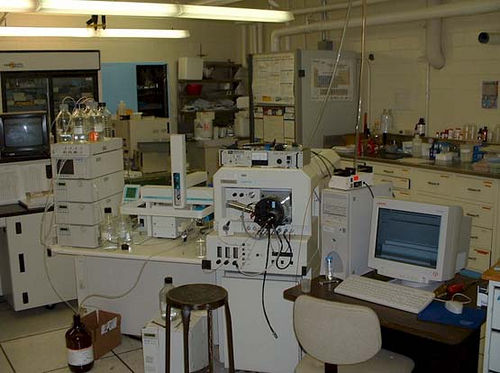
A flame spectrometer heats the atoms of a sample to an excited state and then analyzes the resulting emitted spectra to determine the atomic makeup of the sample.
Spectroscopy is a technique used to assess the concentration or amount of a given element by examining wave lengths emitted by an excited sample.
A spectrometer is an instrument used in spectroscopy, measuring the properties of light over a certain electromagnetic spectrum. In the case of flame spectroscopy, the spectrum analyzed does not typically include visible light.
In flame spectroscopy, a sample is excited by a burner or nebulizer/burner combination, thereby exciting electrons into a higher energy state (also known as "incandescence"). These excited electrons emit energy waves that are characteristic of the atomic makeup of the material. The spectrometer examines the emitted spectrum of resulting waves to determine the sample's constituent elements. Proper identification depends on comparison of observed spectrum patterns with indexed patterns already stored in some database. Remember: the quantity that is measured in flame spectroscopy is an energy level, not a physical substance.
There are three types of flame spectroscopy: atomic emission, atomic absorption and atomic fluorescence. Each type of flame spectroscopy requires different and particular methods. For example, in atomic absorption spectroscopy, atoms are heated until they reach a ground state, and in this ground state absorb increasing amounts of energy as the concentration of an element increases, but in atomic emission spectroscopy, the energy emitted by heated atoms is measured. Regardless of the specific type, flame spectroscopy is used to measure the concentration of metallic elements.
Most spectrometers require a gaseous fuel to produce a "clean" flame. Common fuels include hydrogen or acetylene. Common oxidant gases, necessary for the burning of the fuel, are nitrous oxide, pure oxygen or air.
Flame spectrometers are capable of analyzing metallic elements in the part per million or billion concentration ranges. In some cases, detection of lower concentrations is possible, depending on the element, the instrument and the methods used.